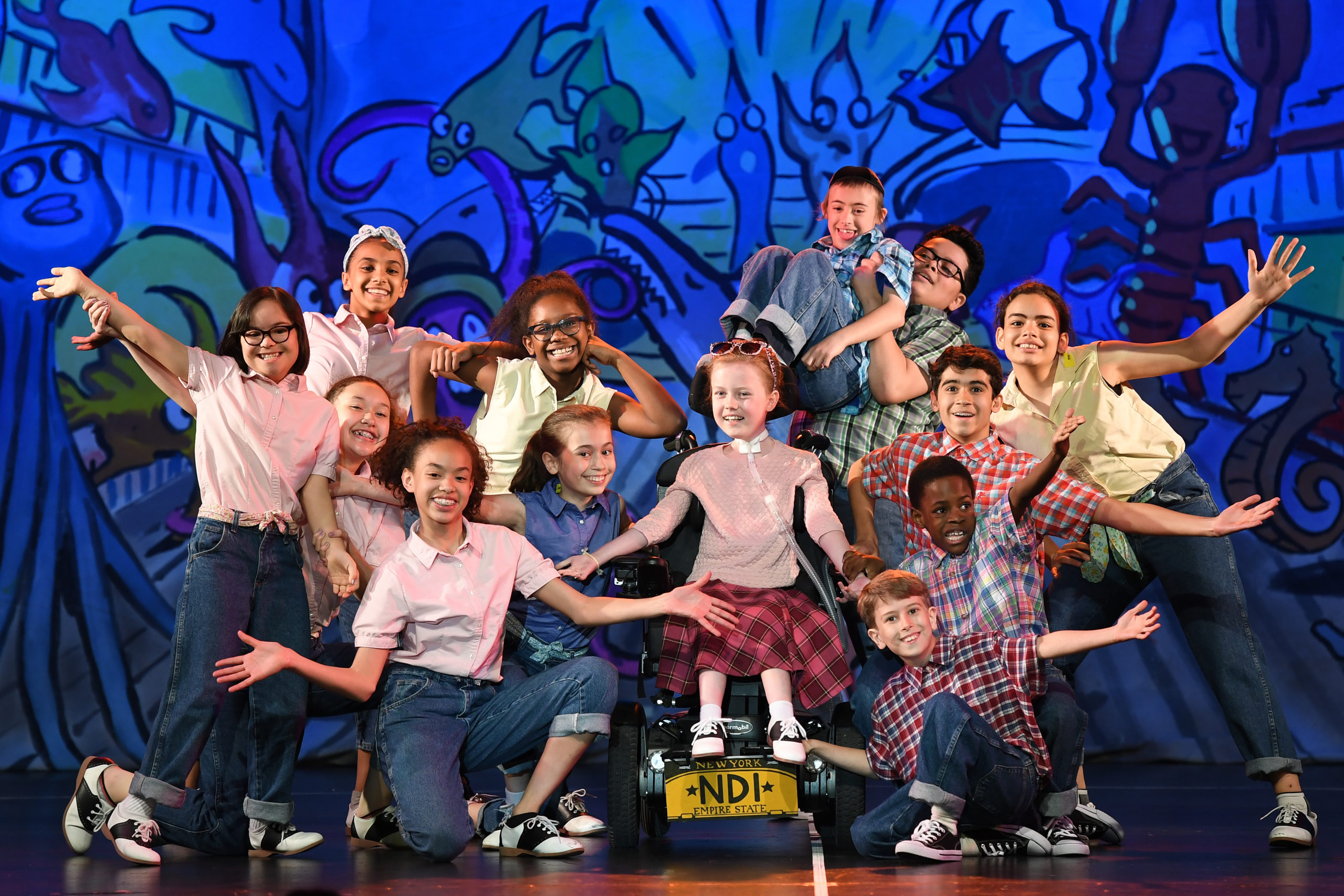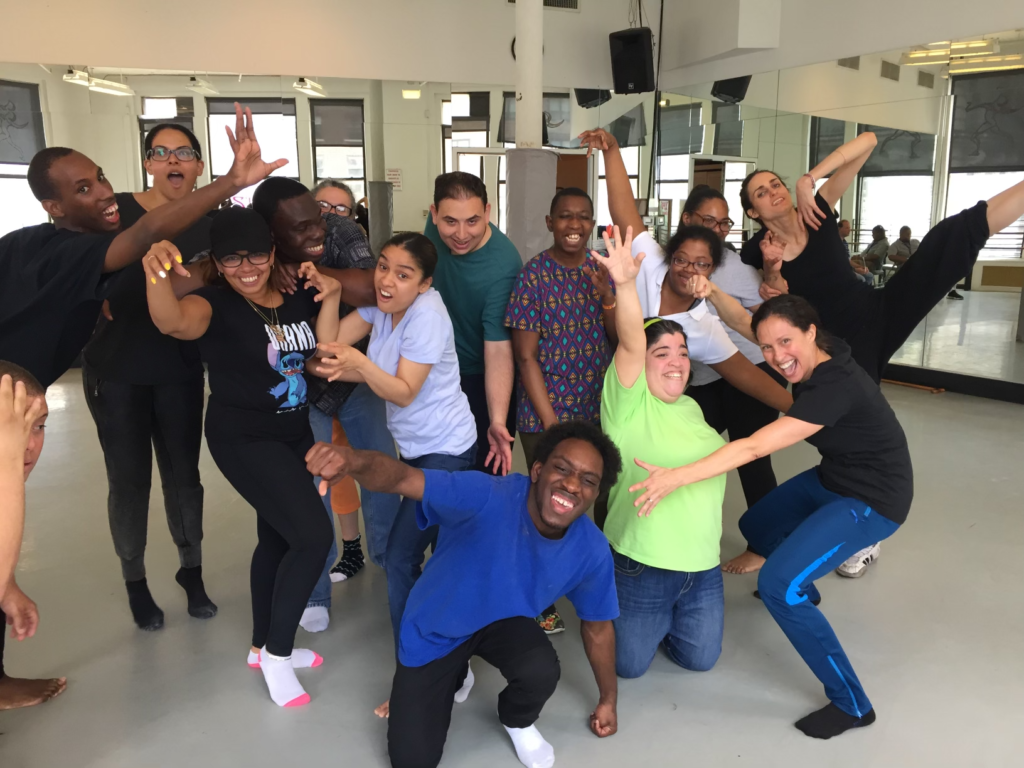
I didn’t feel prepared the first time I taught dancers with disabilities. Although I had spent nearly my entire life performing with and teaching dancers of all ages and skill levels, before this class assignment at a community college in 2015, I didn’t have any experience with instruction that fit their needs. I was, however, able to create an inclusive environment where the entire class was valued and design performances that allowed differently-abled dancers to shine at their level of ability. But I wish I’d been able to do more.
Creating a space where all your students thrive, regardless of ability, requires intention. Whether your class is designed for dancers with disabilities or not, it’s important to teach in a way that all students can reach their full potential. “Every child should have the opportunity to participate in high-quality arts education,” says Kay Gayner, artistic director of National Dance Institute (NDI) and co-founder––along with board-certified pediatric physical therapist Agnes McConlogue Ferro––of its DREAM Project, an inclusive program that provides children with disabilities the opportunity to dance and perform alongside a group of age-matched peers.
The following tips are tools I wish I had had for my classes years ago. Use them to help you teach to the abilities of all the students in your dance classes.
1. Focus on what your students can do.
“Create a space where your students celebrate what their bodies can do instead of what they can’t,” says Stefanie Nelson, educator, choreographer and artistic director whose New York City–based company, Stefanie Nelson Dancegroup, partners with the advocacy group AHRC New York to teach classes to adults with disabilities. “It’s all about body positivity, community and learning,” she says, speaking of her approach to the Everyone Danceprogram she supports.

To assess where your students are, consider prompting a self-led warm-up, for example. This allows your students the autonomy to move in ways that are natural and enjoyable to them while providing you insight into their movement abilities or potential.
“It’s important to meet the child where they are,” Gayner adds. “Our movement focuses on what the children can do, what they like, what’s possible and how we can expand what’s possible.”
“Create a space where joy is allowed to flourish.” —Stefanie Nelson
2. Teach outside the box with relatable references and a variety of learning modalities.
Bonnie Schlachte, founding director of Ballet for All Kids––a nonprofit program that provides classical training for all ages and abilities––advocates for creative learning design to reach a diverse range of dancers. She developed the Schlachte Method, a certified curriculum developed to accommodate all abilities, body types and learning styles, which she uses in her classes and even teaches other educators how to use. “Try to appeal to those learners,” she says when discussing visual, auditory and kinesthetic learning modalities. “How you learned to dance may not be the way everyone else can learn.”

Schlachte suggests using images, asking other educators for ideas or approaches that have worked for them or employing everyday references that dancers can relate to. For instance, she uses an image of an evaporation cycle as a visual model for the concept of alignment. In her illustration, she describes the lake as being her students’ feet before guiding them to pull everything up to the clouds, which represents their heads. She then offers imagery of rain falling down their backs before stressing that both concepts call for continuous movement. “Some things will stick and some won’t,” she continues, “but you have to try.”
Nelson has a similar approach, having used baseball or ice-skating references to help her students process movement when counts weren’t working. “Visual imagery using sports references like ‘Swing the bat’ or ‘Kick the soccer ball’ helps participants understand general sequencing without getting bogged down in counts,” she says. “I try to find the easiest access into the movement in a way that’s meant to be all-inclusive, encouraging and positive.”
“Have high expectations of everyone in your class, but don’t shame someone who isn’t getting it. If you’re going to accept people in your class with different abilities, then you have to take responsibility for that decision. It’s completely doable.” —Bonnie Schlachte
3. Use inclusive language.
NDI’s approach to inclusive, high-quality dance training for all even extends to the language that’s used in classes. For example, the teaching artists use “translation” instead of “variation” when guiding the collaborations between students in NDI DREAM classes. “‘Variation’ implies there is a way, and ‘translation’ suggests each way is its own version,” Gayner says.
NDI also uses “age-matched peer” instead of “neurotypical dancer” to describe the partnership between its program participants. “We believe everyone in the room matters,” says Agnes McConlogue Ferro. “We see our age-matched peers using more inclusive language too.”
Schlachte takes it even further, advocating for educators to maintain high standards for students of all abilities. “As soon as you give someone a label of a disability, you immediately put them in a box and stop expecting as much from them,” she contends. “I’ve seen how incredibly capable children are when you give them the chance.”
“Dance is at the heart of what we’re doing, but the creativity of that child should be celebrated and incorporated. There needs to be a recognition that that pacing needs to be flexible.” —Agnes McConlogue Ferro
4. Acknowledge that the impact may be more qualitative than technical.
Improved dance skills almost pale in comparison to the other transformations students under this type of instruction experience. McConlogue Ferro, who’s also a clinical associate professor in Stony Brook University’s physical therapy program, notes that the DREAM Project’s impacts range from increased understanding of how to connect with others to self-realization, friendship, self-advocacy and more—not to mention the changed perception and empowerment of the parents. “Every individual in the room leaves with something improved,” she says.
Nelson, Schlachte and Gayner agree. Whether it’s Schlachte’s dance parents finding success with applying her methodology to their child’s primary education or Nelson’s dancers’ increased confidence after exceeding their own beliefs of what they thought they could do, psychologically safe, inclusive and empowering learning experiences have a positive impact on everyone involved. “Including everyone elevates everyone,” says Gayner.





